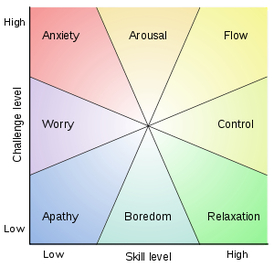Psychologists have discovered that if you stop someone in the middle of an experience and ask them how they’re doing they’ll respond differently than they will if you ask them about the same experience after it’s over.
A memory quirk called the peak/end rule is responsible for this phenomenon. The rule states that during the process of converting experiences to memories the peak, or most intense moment, and the end especially are over-exaggerated, whereas almost the entire remainder of the experience is not used. It doesn’t matter how long or short the experience was, memory will still cherry pick the peak and end and discard the rest.
There are four possible combinations of the peak/end rule: (1) a good peak and a good end – this is ideal; (2) a bad peak and a good end – still pretty good because for memory’s sake, all’s well that ends well; (3) a good peak and bad end – the end might ruin everything, but it could be worse; and (4) a bad peak and a bad end, which can haunt you forever.
Since we’re all trying to attain greater levels of happiness in life, let’s be thankful for the first and second scenarios when they occur and focus on what we can do to improve the third and fourth scenarios.
The good news is that with awareness of how the peak/end rule operates we can consciously shape our experiences so they're more likely to be preserved as good memories. We’re pretty fortunate to have this power, since memories fill the pages of the stories of our lives.
Before we get into it, let me explain that an experience has no predetermined duration. You can choose when it begins and ends. You’ll want to officially start an experience with something positive. For instance, you can tell yourself that your day hasn’t really started until you’re feeling that nice coffee buzz or your significant other says, “I love you.” Likewise, you get the final say in when an experience ends. You set the parameters of your experience and your mind's memory-making machinery will abide.
Above all else, try to end your experience on a good note. If you can, quit while you’re ahead. Stop quizzing yourself after you give a correct answer. Choose to end the experience when enjoyment is at a high level. Walk away from the roulette wheel after you’ve won, even if you still feel hot. For a fantastic memory, try merging the peak and the end. If only Michael Jordan would have called it a career after hitting the final shot to win the championship against the Utah Jazz.
Alrighty then, in scenario three, you’ve so far had a good experience that is nearing its end when things take a bad turn. But you can fix it. For example, you’ve had a great vacation. But the flight home was terrible. After a long delay you got a middle seat next to a crying baby and upon arrival you found out that your checked bag was misrouted. No sweat. Don’t officially end the experience, yet. Instead, on the way home from the airport stop at one of your favorite restaurants or swing by a friend’s house for a drink and a laugh. Then tell yourself the vacation is officially over.
Have you ever heard the expression, “If you’re going through hell, keep going”? Sage wisdom. Some of the most cherished memories we humans have are our triumphs over adversity. If things are bad right now, the worst thing you can do is quit. That would put you in scenario four territory. Think of getting a large and particularly painful tattoo. Once you are in the chair you have to stick it out; otherwise, you’ll live to regret it. In other situations, try to make light of your bad luck with humor; broaden your perspective, note that there are a lot of people who still have it way worse than you do (run a Google image search for poverty), then express a little gratitude; find a silver lining, even if you have to fabricate it; and try for an 11th hour reconciliation. Even if you don’t succeed, you can always end a bad experience with an attempt to improve it.
Daniel Kahneman is considered the greatest living psychologist. He’s the only non-economist to win the Nobel Prize for Economics. If you’re interested in how we evaluate happiness in the present versus the past, why intuition sometimes works and sometimes fails miserably and why we take irrational risks check out his TED talks and other works.
If you enjoyed this post consider tweeting or sharing it so others might, too.
BODY – MIND – SPIRIT
| |




 RSS Feed
RSS Feed